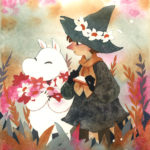Month: May 2016
The types as quotes from people with that type:
The types as quotes from actual people with that type:
ESFP – “Well the sales tax in Hawaii is really good so I had to buy couture shoes to capatalize on that.”
ESFJ – “You look sad. Do you want to talk about your nemesis? Will that help?”
ESTP – “I’m not saying I would have sex with myself, just that if there were three of me and the other two were; well, I’d watch.”
ESTJ – “It’s not that you’re wrong so much as you are breaking the rules, and the rules clearly state that you’re an idiot.”
ENFP – “Paint ball is better than lazer tag because there’s the potetial to get hurt and why bother otherwise.”
ENFJ – “This makes me want to write a haiku about my feelings, I’m going to put it on the back of my next mixtape.”
ENTP – “Please dont be dissapointed in me but I started a protest in class because I was bored.”
ENTJ – “I made you a list of why you’re wrong. It’s three pages and not even double spaced.”
ISFP – “I think if you look hard enough everybody is a tortured soul. Like Lana Del Ray.”
ISFJ – “I don’t know how to help I already made a casserole what do I do”
ISTP – “Go get the iodine I found my flame thrower.”
ISTJ – “You don’t understand, I love this venitian plaster wall more than you.”
INFP – “I made myself sad thinking about a divorced fox just now. His poor children.”
INFJ – “I don’t know I just had a feeling.”
INTP – “I could be lying but-” //walks away//
INTJ – “Have you considered lobotomising yourself in the name of science?”
He wanted her autograph because she made the cover.
Perfect children being all awkward, cute and perfect~ <3
I really love this damn series.
Medieval Herbs and Their Uses
The accepted idea of medieval use of herbs follows the idea of the household herb garden. Herbs were very important to several aspects of the medieval home and didn’t just provide a medicinal function. Herbs were also used to season food and to ward away unwanted household guests (like bed bugs and other such unpleasant beasties). Medicinal herbs were known as ‘simples’.
Historians currently think that every house would have had a herb garden (though in cities, there may have been a communal herb garden rather than a personal one). The women of poorer households would have maintained the garden and harvested the produce, whilst richer households may have had servants or gardeners to do this for them. A weak harvest could often mean suffering and potentially death from illness, so this task was considered an exceptionally important part of ensuring well-being.
Seasonal herbs would often be dried in cool places that were dark and had good ventilation. Herbs that grew throughout the year and could be easily replenished were more likely to be used whilst fresh. Dried herbs had a shelf-life of about a year.
The medieval mentality was that disease was spread by smells, what they called ‘miasmas’. In order to prevent disease, they believed that a home must smell pleasant. They would put herbs with a pleasant odour (lavender, citronella, etc.) around the home, including in their mattresses, which were usually filled with straw or reeds. They believed that the pleasant smells would keep away insects and illness. This was their way of utilising preventative medicine.
Medieval nobles often carried things called ‘nosegays’. A nosegay was a bundle of herbs that would be used when the person came across a foul smell; they would ‘protect’ themselves by smelling the bundle instead of the ‘miasma’.
So, now that the importance of herbs is in your head, here’s a list of herbs and their uses. It’s certainly not exhaustive, but it should give you a general idea of some of the things available to medieval people.
Barks/Wood
Cinnamon: The bark of an Asian tree, though most medieval Europeans believed that it came from Arabia due to ancient stories. It was popularly used as anointing oil, but needed to be diluted with other oils as otherwise it would burn the skin. It was also burned as incense and used to flavour fruit and meat. It carried a great deal of social prestige due to its expense, so if a household could afford cinnamon, the cooks would use it in every meal possible in order to impress.
Sandalwood: There are two kinds of sandalwood, red and yellow. Yellow sandalwood was used as fuel whilst red was used as a food colourant, but given that it tasted like wood and was sometimes not diluted enough, it didn’t often taste good and it could be internally damaging.
Flowers
Calendula (Pot Marigold): Rounded, yellow flowers that are relatives of everyday marigold. They were thought to follow the sun’s movement across the sky. The petals were used in tonics, soups and broths to strengthen the heart.
Chamomile: Often mistaken for a daisy, chamomile is a creeper plant that was used for washing hands and to counteract headaches and fever. Its odour becomes more potent when it is crushed, so it was often laid out on garden paths and benches. This flower has proven useful by modern day science, though for settling stomach upsets and soothing anxiety.
Dandelion: Was used to treat colds, ulcers, dental problems, boils, itching, gallstones and jaundice.
Hops: Flowers from a hop vine that were cone-shaped. Frequently used as a sedative but later used to flavour beers.
Lavender: Purple flowers that were usually dried and used for seasoning food (I know, don’t cringe) and washes that helped with headaches. People sometimes laced lavender into the insides of their hats/caps to prevent headaches, sprinkled it into their baths and used it to repel flying insects.
Roses: Used largely for creating distilled rosewater, which was primarily used for scent and in food. Also used to gradually strengthen patients medicinally.
Saffron: The inner core of a saffron crocus flower (and the distinction is important, because other crocus flowers would be poisonous). It was grown in Europe but flourishes better in hotter regions like Turkey. Because of this, it was often substituted by turmeric or safflower. It was primarily used in food for flavour and colour, and also to treat infections.
Fruits
Blackberry: Otherwise known as ‘goutberry’, due to its use to cure gout. The entire plant could be used for various things; the bark and leaves were chewed to aid bleeding gums, blackberry syrup was used for dysentery and the leaves soothed scalds and burns.
Cloves: Flower buds from a tree found in the East Indies. They were most commonly used to freshen the breath and to stud meat and fish. It could be powdered to sweeten gruel or to be used as a painkiller for wounds or toothache. Occasionally used as an antiseptic, but the idea wasn’t held to by ‘knowledgeable’ physicians.
Citrus: Lemons and oranges were grown in Spain and the East. They were imported by other countries and used as flavouring. They were considered too rare and expensive to eat on their own. Don’t make the mistake of assuming that limes fall into this category; they were a fruit from the Americas and weren’t known in the rest of the world during the medieval period.
Mace: The covering that separates the nutmeg from nutmeg fruit. It was supposed to have a shelf-life of ten years and be best when golden in colour. Used by the very rich to strew on the floor of their homes (‘very rich’ meaning the upper 2% of the population).
Leaves
Aloe: Used externally for hair loss, wounds, haemorrhoids and ulcers. When eaten, it was thought to work well as a laxative.
Angelica: Liquefied into cough medicine, but also reputed to be the only herb witches didn’t use. Women would plant angelica in their gardens to ward away witchcraft.
Burdock: Thought to treat leprosy and cancerous tumors. It was also a common aid for other skin conditions or infections like ringworm. It was sometimes used to counteract fever.
Garlic: A Mediterranean all-rounder for infections, wounds, leprosy, heart problems, epilepsy, colds and cancer. Initially shunned by the upper classes but strongly believed in by the lower.
Melissa (Balm): Oval-shaped green leaves that smell and taste like sweetened lemon. Thought to be an aid for ‘melancholy’ and used in food and drinks. Also used as a charm for bees and to polish wooden furniture.
Basil: ‘Warm’ tasting dark green leaves. Used when cooking vegetables.
Borage: Cucumber-tasting, ‘hairy’ leaves that often went into salads and drinks. Supposed to bring courage.
Hourehound: Unpleasant taste, naturally ‘woolly’. Liquefied to create cough syrups.
Laurel and Bay Leaves: Don’t grow well in Northern Europe and were instead cultivated in the Mediterranean. They were used as incense, intertwined into crowns as signs of achievement and also used to season stews and meats.
Marjoram: A relative of oregano with a milder taste. Most frequently used for spiced wine, beer, stomach-settling remedies and and some cooking (soups and poultry, most commonly).
Mint: Liquefied with vinegar as a mouthwash to restore health of the mouth (unpleasant breath related to the belief that bad smells caused disease; medieval people would brush their teeth with sticks and use mouthwash to make sure that their breath was pleasant). Also used to settle the stomach, cool fevers and soothe wounds and venomous bites.
Mugwort: An ointment used as a common ‘cure’ for period pain and foot ailments, but painful and damaging if used internally.
Rosemary: Considered to be a good all-rounder for any ailment. Uses included facewash, cleaning teeth, infection-preventing incense and the warding off of nightmares (when placed underneath the pillow).
Sage: Used in salads and as a ‘spring tonic’ (a drink that promoted good annual health). Also used as a laxative and the English often made sage butter.
Thyme: Used to add scent to sacrifices and to season large meat roasts. Also used to add fragrance to bath water and to stop bleeding from wounds.
Yarrow: Often thought to be the miracle-herb of Knights due to its use in treating animal bites, wounds and severe headaches.
Seeds
Anise: Eaten to ease the ‘passing of gas’ and to incur sweating. Tastes like licorice.
Cardamom: Indian seed pods that Arabic countries used to flavour their coffee, meat and rice.
Coriander: Used to treat stomach ache and often used in bread, was thought to deter fever.
Cumin: Used by Slavic peoples to make rye bread (along with black cumin, which is a different spice; this seems to vary by region). Used in some European cooking but largely to treat trapped wind.
Flax: Boiled flax seeds were used to treat constipation. The seeds on their own were thought to help to remove foreign bodies from the eyes, because it made them water (and medieval people believed that getting rid of ‘bad things’ in the body was a good thing, therefore bleeding, eyes watering and other such leakage were considered healthy).
Nutmeg: An Indian seed pit often exported to Europe. It would be transported as a whole nut and then either eaten or ground down to improve digestion. Sometimes, rich noblemen would give silver plated nutmegs to their lovers as scented jewellery. Long-term use of nutmeg can result in problems with the kidneys.
Sources:
1. Mostly Medieval – http://www.mostly-medieval.com/explore/plants.htm
2. Gallow Glass (Jennifer A. Heise) – http://www.gallowglass.org/jadwiga/herbs/herbhandout.htm
3. Gallow Glass (Jadwiga Zajaczkowa)- http://www.gallowglass.org/jadwiga/herbs/teen.htm
4. Norton Priory – http://nortonpriory.org/menu/gardens/medieval-herb-garden/
5. Gardening Know-How – http://www.gardeningknowhow.com/edible/herbs/hgen/the-medieval-herb-garden.htm
Picking flowers.
Little painting of Moomin and Snufkin. I like to imagine Moomin is going to take all of those lovely plump flowers back home to his mother. I really love these two and their overload adorable friendship.
Wip pictures, sketches and a lot more of my exclusive illustrations can be found from my patreon site. Thank you so much for stopping by! /( *3*)/
How to tell if you are emotionally abusive
I feel we talk about signs of abuse from the victims standpoint but not from the abusers standpoint. In order to stop emotional abuse and recognize when we engage in unhealthy behaviors I made this list.
- Do you react to important people in your life by ignoring them completely and not acknowledging their presence? Especially if they do something you don’t like?
- Do you feel that your partner/friends/family members are the cause of your bad moods or frustration?
- Does your partner/etc “do things the wrong way”?
- Do criticize your partner/etc for being unreliable or a bad person?
- Do you feel you have to constantly overlook your partners flaws in order to be around them?
- Are you frequently accused of being “moody” or “hard to please”?
- Do your partners complain that “nothing they do is good enough?
- Do your partners appear to avoid you when you are angry or upset rather then comfort you?
- Do you negatively comment on their intelligence or appearence? Either in private or in front of others.
- Do you blame them when someone goes wrong?
- Do you ever use phrases like “I could just hit you right now” or “I”m so mad I could punch something”?
- Do you ever punch walls/throw things in front of your partner/etc?
- Do you leave during fights and not inform of where you are going and when you will be back?
- Do you behave the same alone with your partner that you do if you were in front of your friends or in public?
- Have you frequently accused your partner of being too sensitive?
- How often is your partner praised and complimented by yourself?
- Do you think your partner spends too much time with friends and family?
- Do you feel your partners friends and family are trying to drive you apart?
- Do you actively comfort your partner when they are upset or angry even if you don’t really understand why they feel the way they do?
- If your partner brings up a behavior that bothers them do you respond by discussing how to change it or do you respond defensively?
- Do you have difficulty apologizing?
All of these things are abuse tactics. Obviously even the healthiest of us will do these sometimes but if any one becomes a regular habit that’s when the problem starts.
this is super important, i feel like this website makes it easy to put yourself in the role of the victim but never the abuser. It’s also important to note that being a victim does not preclude you from being an abuser.
I find this esp. important. I’ve exhibited some of these behaviors. I know abuse perpetuates abuse and that victims of abuse learn abusive behavior. I also know that having mental illness can make reacting and dealing with feelings even more difficult. That being said: being mentally ill does not mean you cannot be held accountable for your actions. Nor does being a survivor of abuse. I gotta take care of myself & heal and recognize how trauma and mental illness plays a role in how I treat others. Being a victim doesn’t mean you cannot be an abuser too.
One of the reasons I always recommend Lundy Bancroft book ‘why does he do that? Inside the minds of angry and controlling men’ to everyone is because it is an invaluable tool for highlighting the toxic aspects in our own personalities.
All men have been socialised with some of the traits/behaviours he speaks of, and the behaviours encourage attitudes and then the attitudes entrench behaviours. Breaking this cycle takes determination, honesty and self care, but it’s in invaluable journey.
I will also reiterate that abuse/abusive mentalities are not always consistent between relationships with the same person. What negatively affects one partner will slide right off the shoulders of or be immediately curtailed by another. What one partner needs another partner dislikes or doesn’t want. What will cause one relationship type to crash and burn horribly will support or confirm another relationship type. This is why abusers often have functional friendships and disastrous romantic relationships. This is why some poly abusers can have very functional relationships with one partner and disastrously harmful ones with another. Or, have great nonprimary relationships and terrifying primary ones, or whatever. Sometimes we believe it is acceptable to mistreat or behave badly only in specific types of relationship, so watch for that both in yourself and in others.
also, to note, having abusive behaviors does not make you evil. it means that you’ve learned some unhealthy coping mechanisms.
the great news is that you can UNLEARN them and get new, healthy behaviors that will make sure that you and those close to you will thrive. 😀
being a writer like:
→ time to write
→ energy to write
→ inspiration… pick two
*crying*
Why is this so true
Ordered skate tool, received fishing bait… … .. … … huh. Amazon why.









